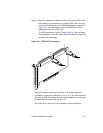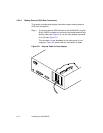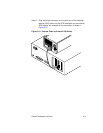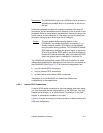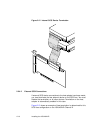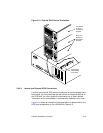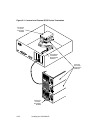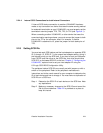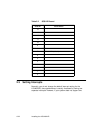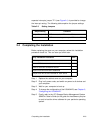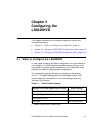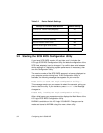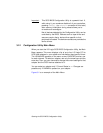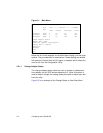
Detailed Installation Procedure 2-21
2.2.4.4 Internal SCSI Connections for both Internal Connectors
If internal SCSI device connection to another LSIU40HVD has been
made, or any connection to a device that uses the same sensing method
for automatic termination as your LSIU40HVD, you must properly set the
termination override jumpers TP2, TP3, TP5, or TP6 (see Figure A.1).
When connecting another LSIU40HVD, or other device that uses the
same termination sensing scheme, you must connect the jumper to both
pins on the TP for the connector used. For example, if another
LSIU40HVD is attached to J3, place the jumper on both stake pins of
TP3.
2.2.5 Setting SCSI IDs
You must set each SCSI device and the host adapter to a separate SCSI
ID, 0 through 15. SCSI ID 7 is the preset host adapter setting, giving it
the highest priority on the SCSI bus. If you plan to boot your computer
from a SCSI hard disk drive on the SCSI bus, that drive should have
SCSI ID 0, or the lowest SCSI ID on the bus. Chapter 3, “Configuring the
LSIU40HVD,” explains how to set your host adapter ID using the
LSI Logic SCSI BIOS Configuration Utility.
The peripheral device SCSI IDs are usually set with jumpers or with a
switch on the peripheral. Refer to the peripheral manufacturer’s
instructions and to the user’s manual for your computer to determine the
ID of each device and how to change it. You must have no duplication of
SCSI IDs on a SCSI bus.
Step 1. Determine the SCSI ID of each device on the SCSI bus. Note
any duplications.
Step 2. Make any necessary changes to the SCSI IDs and record the
IDs for future reference. Table 2.2 is provided as a place to
keep this record.



